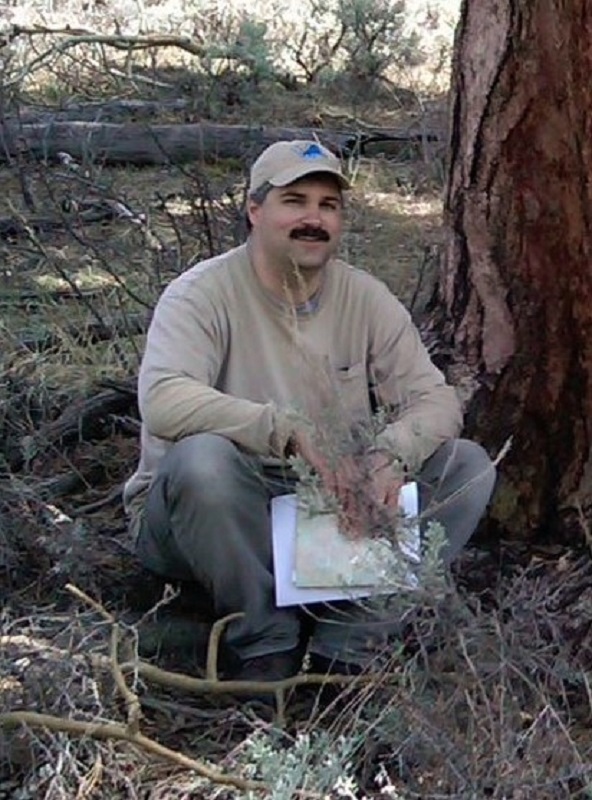| Faculty Profile |
|
Department
Secondary Title
General Education Faculty Coordinator
Phone
313-577-9093
Fax
313-577-6891
Office
3107 Biological Sciences
1360 Biological Sciences
Selected publications
- Palviainen, M., A. Lauren, J. Pumpanen, Y. Bergeron, B. Bond-Lamberty, M. Larjavaara, D.M. Kashian, K. Koster, A. Prokushkin, H.Y.H. Chen, M. Seedre, D.A. Wardle, M.J. Gundale, M.-C. Nilsson, F. Berninger. 2020. Decadal-scale recovery of carbon stocks after wildfire throughout the boreal forests. Global Biogeochemical Cycles 34: e2020GB006612
- Kashian, D.M., L.S. Bauer, B.A. Spei, J.J. Duan, and J.R. Gould. 2018. Potential impacts of emerald ash borer biocontrol on ash health and recovery in southeastern Michigan. Forests 9, 296
- Gustafson, E.J., B.R. Sturtevant, A.M.G. de Bruijn, N. Lichti, D.F. Jacobs, D.M. Kashian, B.R. Miranda, and P.A. Townsend. 2018 . Forecasting effects of tree species reintroduction strategies on carbon stocks in a future without historical analog. Global Change Biology. https://doi.org/10.1111/gcb.14397
- Spei, B.A., and D.M. Kashian. 2018. Age and structure of a Picea mariana stand at the southernmost extent of its range in southern Michigan. Great Lakes Botanist 57: 2-14
- Tucker, M.M., and D.M. Kashian*. 2018. Pre-fire forest remnants affect post-fire plant community structure and composition. Forest Ecology and Management 408: 103-111
- Kashian, D.M., J.R. Sosin, P.W. Huber, M.M. Tucker, and J. Dombrowski. 2017. A neutral modeling approach for designing spatially heterogeneous jack pine plantations in northern Lower Michigan, USA. Landscape Ecology 32: 1117-1131
- Spei, B.A., and D.M. Kashian. 2017. Potential for persistence of blue ash in the presence of emerald ash borer in southeastern Michigan. Forest Ecology and Management 392: 137-143.
- Costanza, K.K.L., W.H. Livingston, D.M. Kashian, R.A. Slesak, J.C. Tardiff, J.P. Drech, A.K. Diamond, J.J. Daigle, D.J. Ranco, N.W. Siegert, J. Neptune, L. Benedict, S. Fraver, and M. Reinikainen. 2017. The precarious state of a cultural keystone species: Biological and tribal assessments of the role and future of black ash. Journal of Forestry 115: 435-446
- Tucker, M.M., R.G. Corace III, D.T. Cleland, and D.M. Kashian. 2016. Long term effects of managing for an endangered songbird on the heterogeneity of a fire-prone landscape. Landscape Ecology 31: 2445-2458
- Kashian, D.M. 2016. Sprouting and seed production may promote persistence of green ash in the presence of the emerald ash borer. Ecosphere 7: e01332
- Binkley, D., and D.M. Kashian. 2015. Tree-level patterns of lodgepole pine growth and leaf area in Yellowstone National Park: explaining anomalous patterns of growth dominance within stands. Ecosystems 18: 251-259
- de Bruijn, A., E.J. Gutafson, D.M. Kashian, H.J. Dalgleish, B.R. Sturtevant, and D.F. Jacobs. 2014. Decomposition rates of American chestnut (Castanea dentata) wood and implications for coarse woody debris pools. Canadian Journal of Forest Research 44: 1575-85
- Kashian, D.M., W.H. Romme, D.B. Tinker, M.G. Turner, and M.G. Ryan. 2013. Post-fire changes in forest carbon storage over a 300-year chronosequence of Pinus contorta-dominated forests. Ecological Monographs 83: 49-66
- Kashian, D.M., R.G. Corace, L.M. Shartell, D. Donner, and P. Huber. 2012. Variability and persistence of post-fire biological legacies in jack pine-dominated forests of northern Lower Michigan. Forest Ecology and Management 263: 148–158
- Kashian, D.M., R.M. Jackson, and H.D. Lyons. 2011. Forest structure altered by mountain pine beetle outbreaks affects subsequent attack in a Wyoming lodgepole pine forest, USA. Canadian Journal of Forest Research 41: 2403-2412
- Kashian, D.M., and J.A. Witter. 2011. Assessing the potential for ash canopy tree replacement via current regeneration following emerald ash borer-caused mortality on southeastern Michigan landscapes. Forest Ecology and Management 261: 480-488
Research Description
My lab studies the ecology of terrestrial ecosystems and the influence of disturbances in shaping them. We try to understand how the combination of site factors, biotic interactions, natural disturbances, and humans affect landscape patterns and ecosystem processes in forests. In particular, we are interested in how disturbances impact plant community distribution, structure, function, and succession, particularly in forests. Nearly all of our research is field-based, supplemented by GIS, remote sensing, and simulation modeling.
